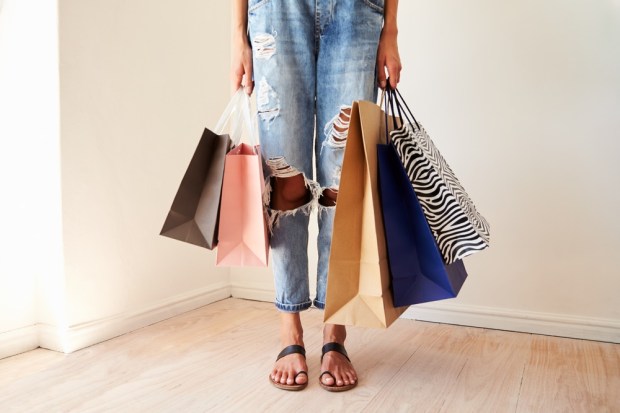Retailers Give Fresh Focus to Single Consumers

Forget millennials, that consumer segment that is blamed for the downfall of most everything while also being the target of many innovative efforts. Single consumers are a force of nature as well when it comes to retail.
At least that’s the case when talking about toilet paper – specifically, the Charmin Forever Roll. Described by one recent report as “a giant roll of toilet paper that purports to last up to one month,” the product supposedly is designed to appeal to consumers who live by themselves, millennials or not. “The Forever Roll comes in a pack of three and even has its own starter kit, which includes a freestanding, brushed stainless steel roll holder designed for its large size,” the report states. Not only that, but the Forever Roll “doesn’t require one to use up precious storage space on a 24-pack.”
Shifting Tide
The report also states that the Forever Roll “suggests a shifting tide, not toward new ‘innovations’ that require more plastic packaging, but toward smartly portioned products that actually makes sense for the ‘part for one’ more and more of us are throwing these days.”
The product joins a parade of other items designed as single servings, presumably more appealing to consumers who are single, as well as people who live in smaller spaces. Single people, often neglected by many retailers – at least based on complaints and stereotypes found online – seem to be getting fresh attention in this era of online and mobile shopping, and shopping clubs.
Take Costco, for instance. There are signs of an emerging mini-genre online that gives advice on what single people should buy at that warehouse store – which, of course, sells items in bulk. A recent entry listed 13 things that single people should buy from Costco, including “food with a long shelf life,” clothes, plants and booze.
Singles’ Day
So much retail and payments innovation takes place in China, and, in a sense, that holds true when it comes to single consumers. The country’s annual Singles’ Day is a marketing event supposedly rooted in the pride that many Chinese consumers take in being single. It takes place on Nov. 11 (notice those numbers) and has become a benchmark for online and mobile commerce, along with the digital payments ecosystems that continue to grow in China.
Singles Day’s first slogan was as follows: “Even if you don’t have a boyfriend or girlfriend, you can at least shop like crazy.”
But, according to reports, by emphasizing that singlehood was a status to be celebrated instead of something to be ashamed of, Alibaba actually created a kind of party feeling around a holiday that only a handful of Chinese consumers were even aware of a decade ago.
Layered on top of the celebratory atmosphere were 50 percent discounts among the handful of participating merchants, who at first had to be cajoled into the event. But those that stayed on board (many dropped out at the last minute, according to Alibaba), were ultimately glad they did, as some noted they generated as much as three months’ worth of sales in a single day.
By 2010, Singles Day had grown to a $135 million annual event, which had some pretty significant logistical problems in keeping up with the demand. Some customers complained of waiting for weeks and even months for goods ordered during the holiday – and there was some speculation that the event would collapse under its own weight.
Big Growth
But, after a lot of infrastructure building and rebuilding, particularly around logistics and payments, Singles Day was back on track – and by 2012, it was officially bigger than Cyber Monday in terms of revenue. By 2014, it was bigger than both Cyber Monday and Black Friday.
It was also, at that point, increasingly becoming a mobile-based shopping event, fueling the coming surge of Alipay.
By 2015, Singles Day was bigger than Black Friday and Cyber Monday combined – and the celebration had gone from online to on television, via national broadcast and global live stream. Last year, the annual event brought in gross merchandise value of $30.8 billion as shoppers clamored to get steep discounts on all sorts of products.
Single people are out there, and ready to shop.
